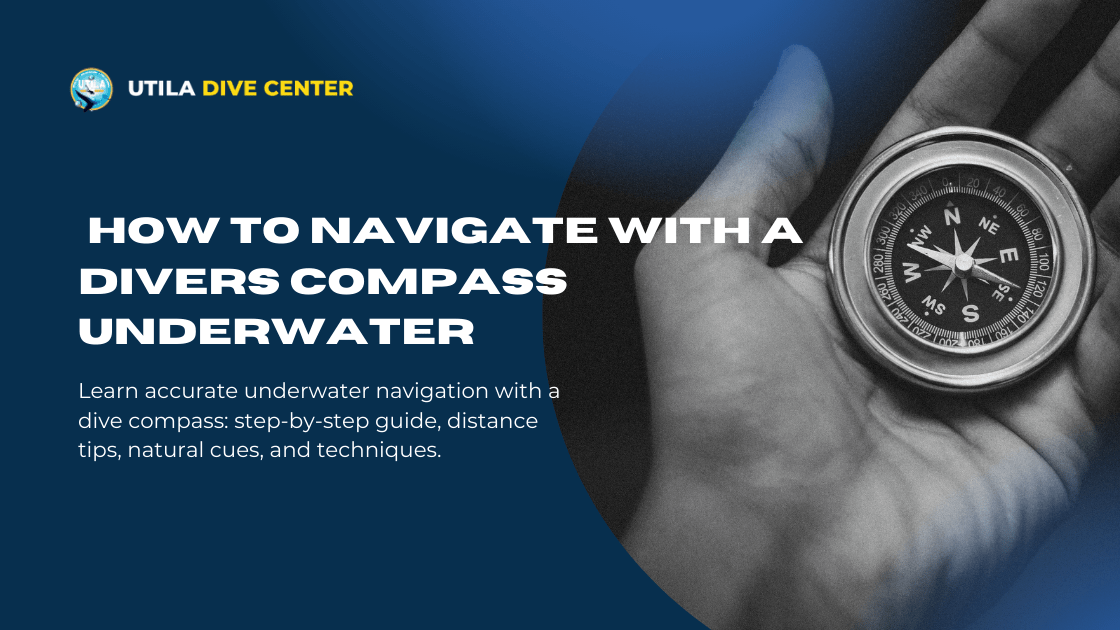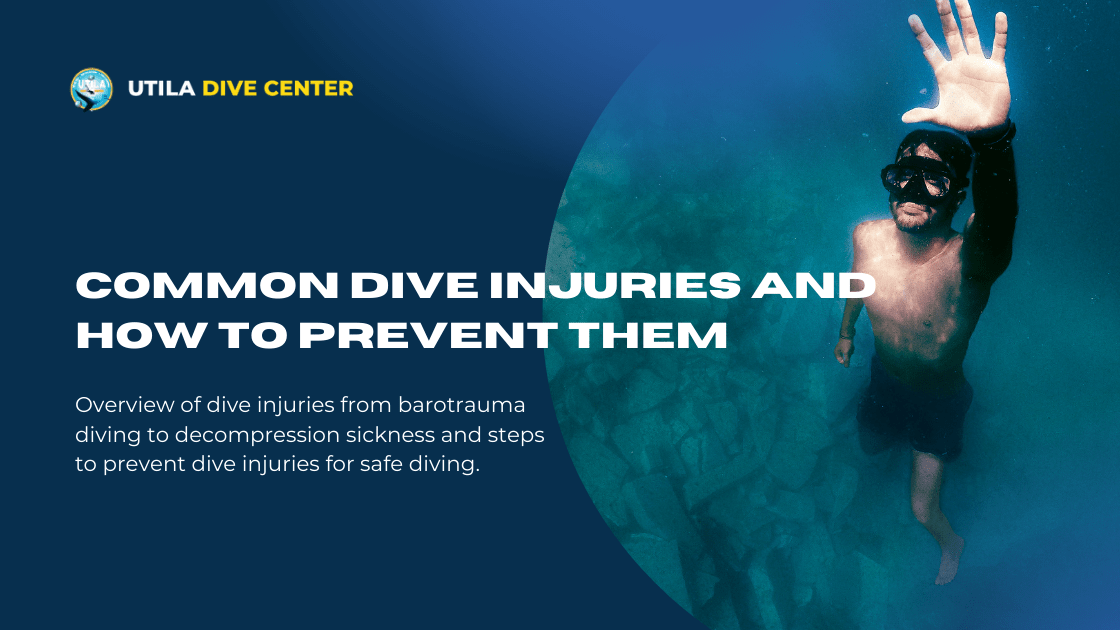
Wetsuit Temperature Guide: How to Choose the Right One for Your Dive
Wetsuit Temperature Guide For Every Dive
By: Manny Lagos | Date: 2024-12-19T12:59:51.482Z
When it comes to SCUBA diving, comfort isn’t a nice-to-have– it’s a must-have. Believe us or not, the right wetsuit can really make or break your experience. It’s the difference between an epic diving adventure and wishing you were back on dry land. Why, you ask? Because the right wetsuit keeps you warm, flexible, and ready to explore all that the ocean has to offer.
Here at Utila Dive Centre, we get it– every dive is different, and so are the divers who work with us. That’s why we’ve come up with this ultimate wetsuit temperature guide to help you find your perfect match (aka the right wetsuit).
Ready to suit up? Let’s go.
Why Wetsuit Thickness Matters
To understand why a wetsuit’s thickness matters, it’s important to know how it actually works: Wetsuits basically trap a thin layer of water between your skin and the neoprene material that it’s made of. Your body then heats that layer of water and creates a cozy thermal barrier to keep you warm. Sounds good, right? But there’s a catch– the thicker the neoprene material, the better it insulates, which is amazing for colder dives. However, thicker wetsuits can also feel a little snug and might restrict your movements underwater. That’s why striking the perfect balance is super important.
From freediving into the warm, tropical waters to night SCUBA diving in chilly waters, picking out the right wetsuit is key to having a great experience.
Water Temperature and Wetsuit Thickness Chart
General Guidelines for Divers
Before we get into the details of this wetsuit temperature guide, here’s a golden rule to keep in mind: colder water means a thicker wetsuit. Simple enough, right? But here’s the thing– your personal tolerance for cold, activity level, and dive duration– all come into play. For example, some divers are perfectly fine in a 3mm suit when the water’s 75°F, while others might prefer a 5mm to stay warm. It’s all about what works best for you!
Wetsuit Water Temperature Ranges and Thickness
In this section, we’ll segregate each type of wetsuit by temperature:
- Warm Waters: Rashguards and Shorties (75°F and above)
First up on the list of wetsuits by temperature are rashguards and shorties. If you’re diving in the tropical waters of Utila, you may not even need a full wetsuit. Rashguards or 1-2 mm shorties are more than enough to protect your skin from the sun, scrapes, and occasional stings while keeping you comfortable. These lightweight options are perfect for people who want maximum flexibility in warm waters.
- Mild Waters: Full Wetsuits (60°F–75°F)
When the temperature drops, it’s time to wear a 3mm or 5mm full wetsuit. These suits cover your entire body, keep you warm, and provide the flexibility you need to move easily underwater. They’re ideal for mid-range depths, recreational dives, or just about any other dive in mild waters.
- Cold Waters: Semi-Dry and Dry Suits (Below 60°F)
The suitable water temperature for a dry wetsuit or a semi-dry suit is below 60°F. Semi-dry suits (6-7mm) are perfect for keeping you warm, thanks to their excellent insulation. If you’re diving in extremely cold waters, though, a dry suit is the way to go as it blocks out water completely and allows you to stay nice and warm even in icy temperatures.
Do Wetsuits Keep You Warm
They sure do– but only to an extent. Wetsuits are basically designed to slow down heat loss, not prevent it completely. The warmth depends on a number of factors such as the water temperature for wetsuit, suit thickness, and how well it fits you. If your wetsuit is ill-fitted or too loose, cold water can seep in, making it harder to stay comfortable. So, for extended dives in cold waters, try adding thermal undergarments (especially with dry suits) and feel the difference for yourself!
Factors to Consider Apart from Temperature
Next up on the wetsuit water temperature guide are the factors to consider apart from temperature.
Fit and Comfort
When it comes to wetsuits, fit really is everything. It should feel snug– like a second skin– but not to the point that it’s uncomfortable for you. As we mentioned earlier, if there are any loose spots or gaps, cold water can seep in and ruin your diving experience. So always pay extra attention to how it fits around your neck, wrists, and ankles. Don’t rush the process– go and try a few options until you find one that feels perfect.
Water Activity
Are you going to push your limits with a technical dive or just go in for a relaxing dive in the Caribbean? Your activity level plays a major role in how much warmth your body generates. If there’s a lot of movement, then you’ll naturally stay warmer and might not need much insulation. But if you’re staying still or spending longer stretches at depth, you’ll need a thicker suit to stay warm. So, it’s super important to figure out the kind of dive you’re doing and match your wetsuit to your plans.
Additional Accessories
Now, how can we overlook the smaller details? People often think of hoods, boots, and gloves as minor extras, but they always come in handy– especially in colder waters. These accessories prevent heat loss from your extremities (head, feet, and hands) so don’t forget to include them in your diving gear!
How to Care for Your Wetsuit to Maintain Performance
If you want your wetsuit to last you a long time, it’s important to treat it right.
Here’s how you can do it:
- Always rinse in fresh water immediately after diving
- Hang it away from direct sunlight to prevent neoprene degradation
- Store it carefully, avoid folding
- Skip harsh chemicals and use specialized wetsuit cleaner for deep cleaning
- Repair small tears immediately to prevent further damage
Conclusion
Picking the right wetsuit isn’t just about gear– it’s about making your dives unforgettable. From swimming in the warm, turquoise waters of Utila to a night SCUBA dive in chilly waters, the right suit keeps you warm, safe, and steady during your dive.
At Utila Dive Centre, we’ve got your back every step of the way– from your first dive in the Caribbean to professional training. So, get ready to suit up and explore the underwater world like never before!
Have questions about wetsuits, suitable weather conditions, or anything else apart from what we covered in this wetsuit temperature guide?
Contact us now!

Rebreather Diving: Everything You Need to Know
Rebreather diving offers longer, quieter dives. Discover how it works, its benefits, risks, gear, and what you need to get started with rebreather diving.
Read more
12 Rules of Scuba Diving All Divers Must Follow
We've curated a list of 12 rules of scuba diving to help you stay safe, protect marine life, and enjoy your underwater adventures with confidence.
Read more
How to Navigate With a Divers Compass Underwater
Learn accurate underwater navigation with a dive compass: step-by-step guide, distance tips, natural cues, and techniques.
Read more
Common Dive Injuries and How to Prevent Them
Overview of dive injuries from barotrauma diving to decompression sickness and steps to prevent dive injuries for safe diving.
Read more